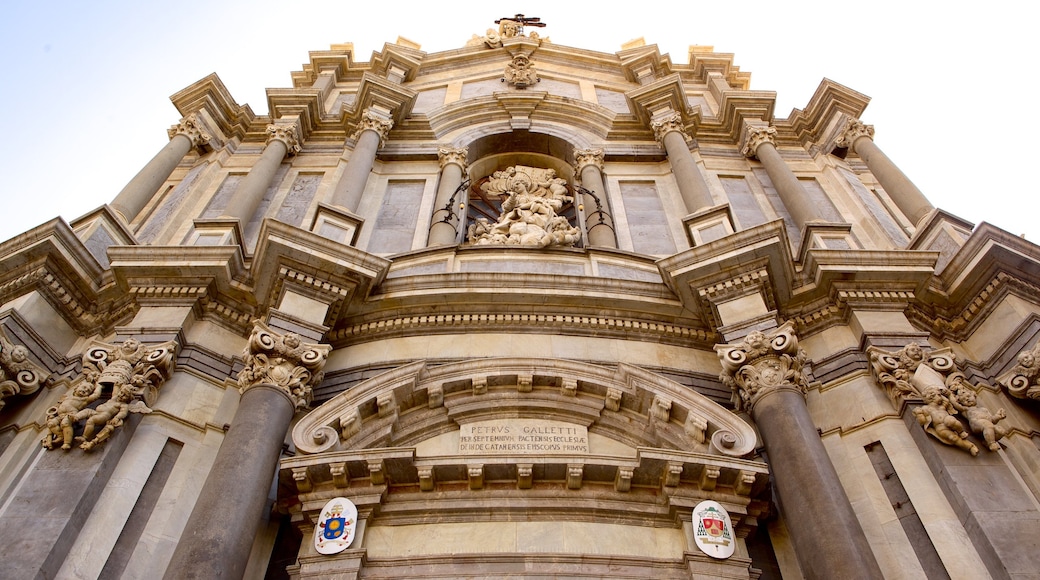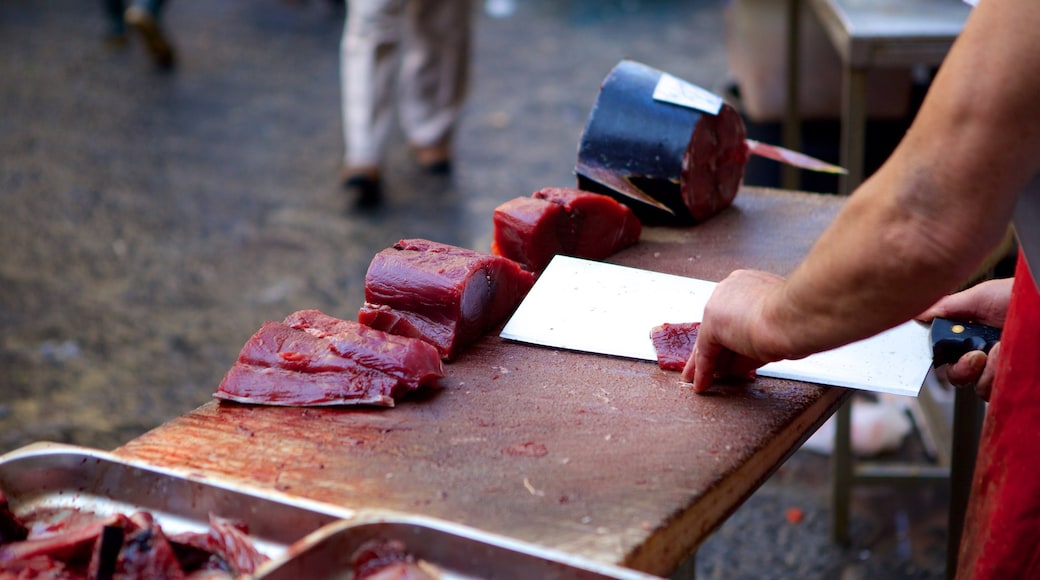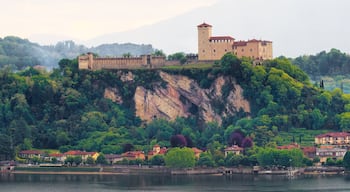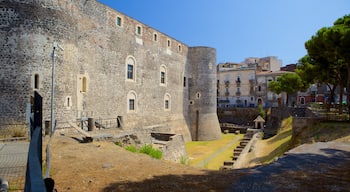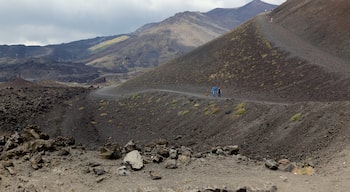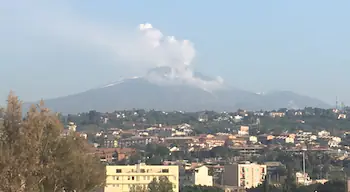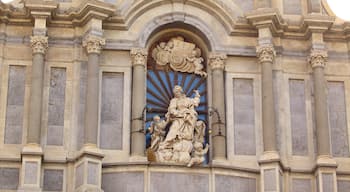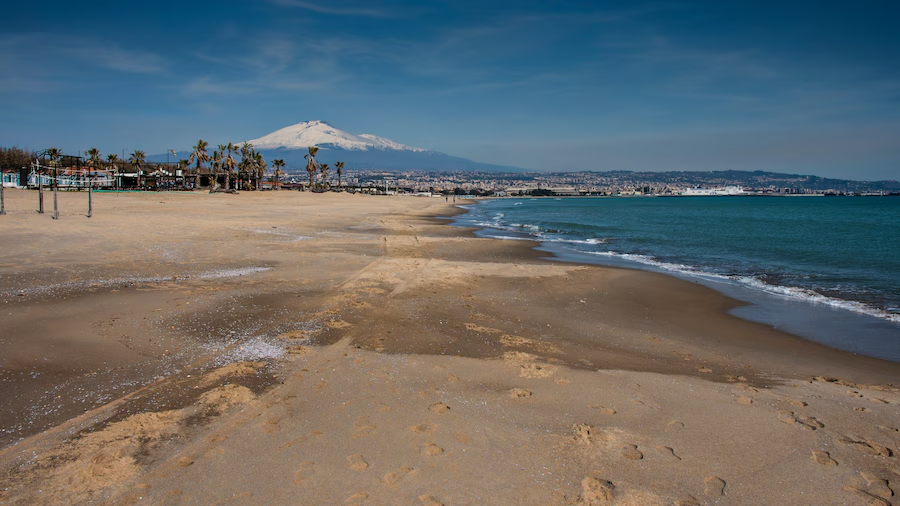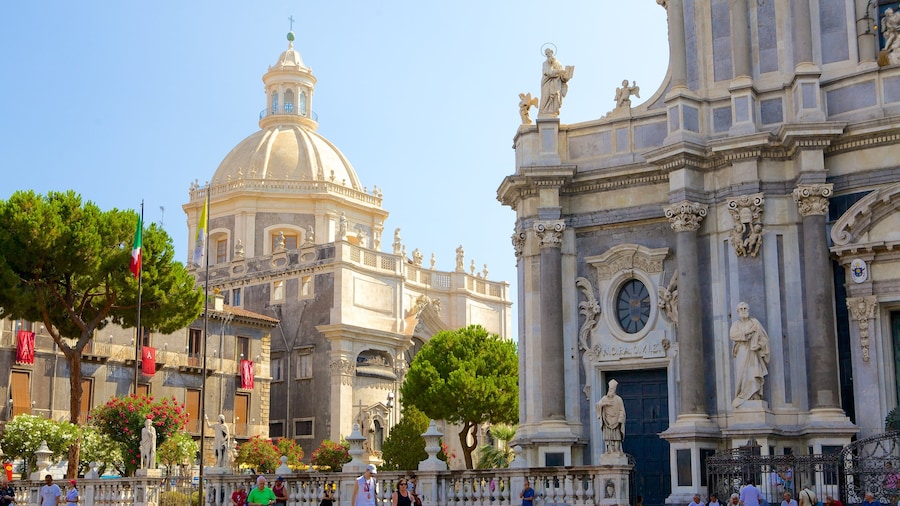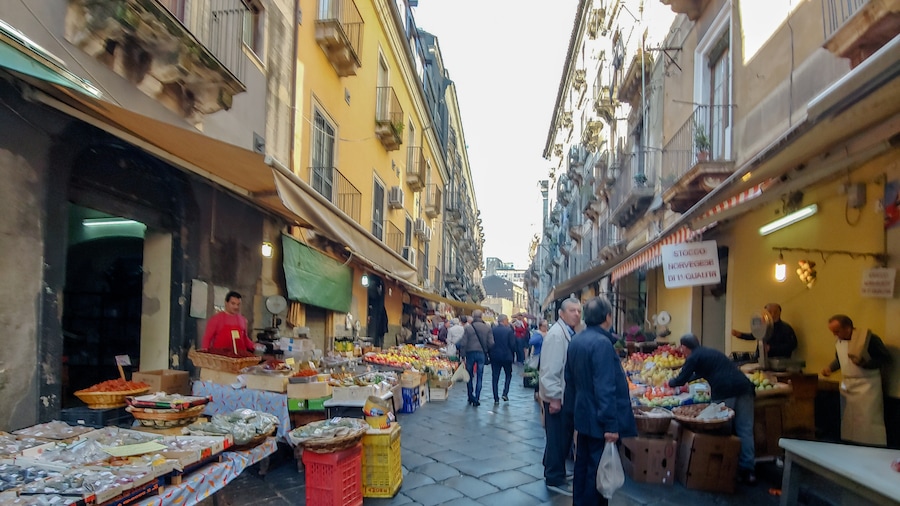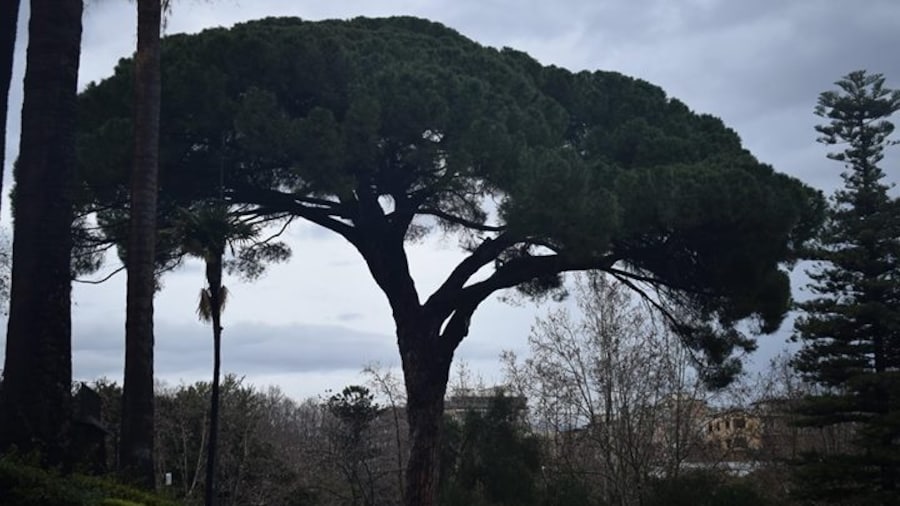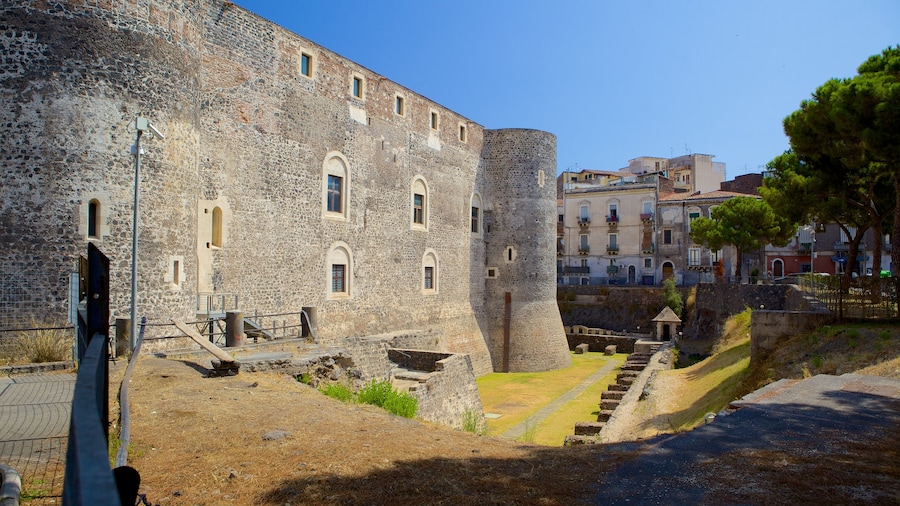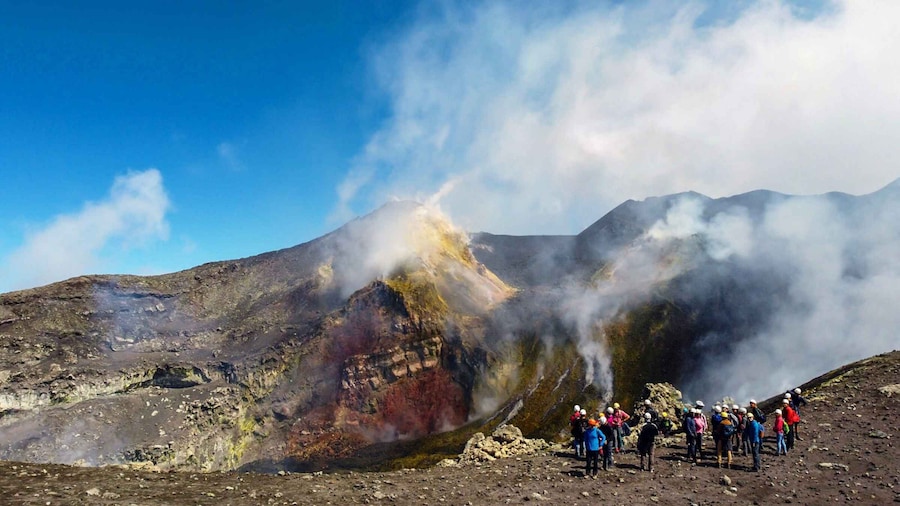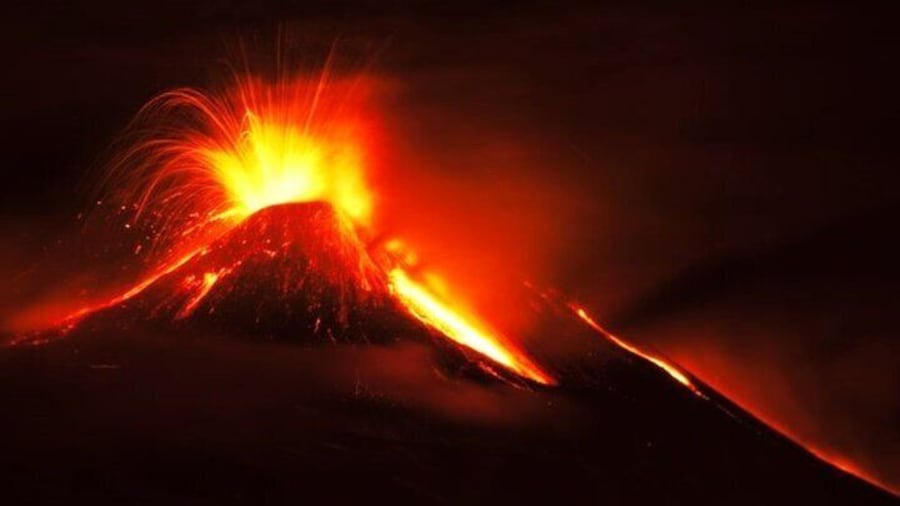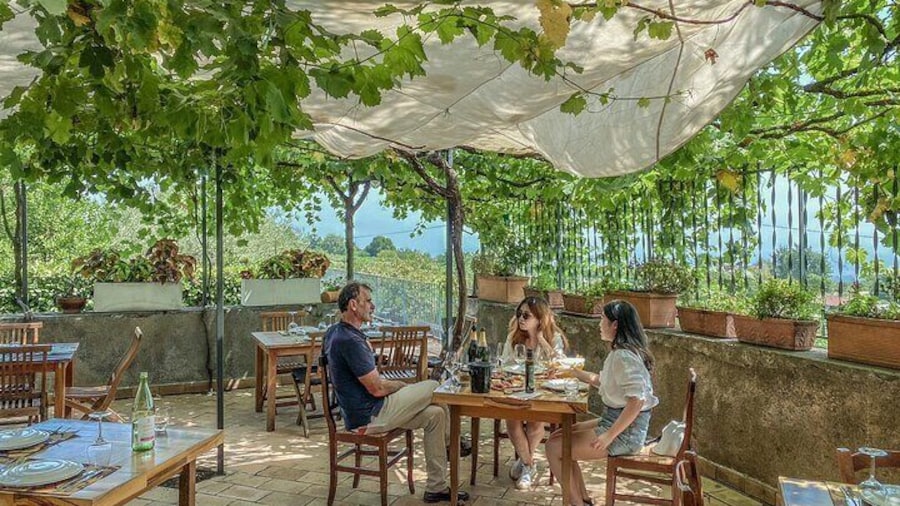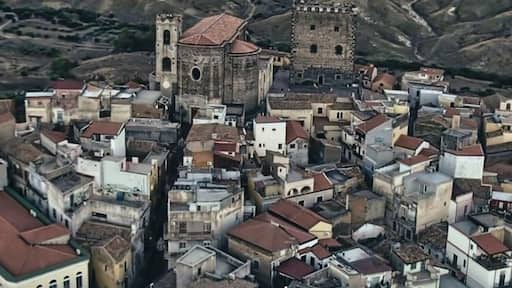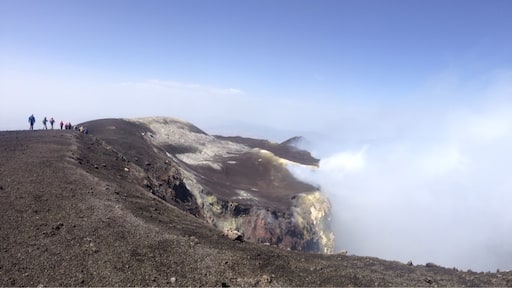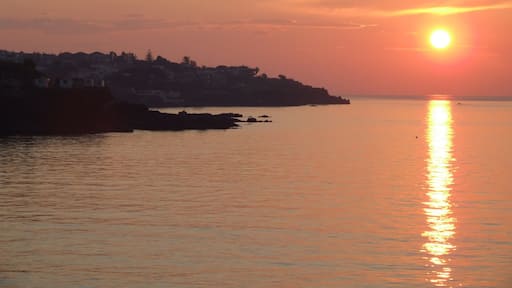The wondrous power of Mount Etna, its snowy peaks, the crystal-clear sea of the Ionian Coast, surrounded by an immense historic and archaeological heritage that you can explore on your holiday in Catania.
The Baroque of the churches and buildings, the wine and food traditions and the music, the warmth of the people and an innate culture of hospitality will greet the tourist any time of year, thanks to a mild climate all year round and an extremely organised system of tourism infrastructures.
Catania offers its visitors not just an unparalleled atmosphere before the grandiose backdrop of Mount Etna, but also much to see and do. After the natural disasters and the destruction of the city at the end of the XVII century, today the centre shines with an elegant Sicilian Baroque style. From Piazza del Duomo with its black lava elephant to the Roman Theatre, from Villa Bellini to the Duomo di Sant'Agata, Catania offers visitors numerous interesting sites and tourist attractions. You can begin with one of the city's symbols, Duomo di Sant'Agata, comprised of a longitudinal building with three naves with transept and three volcanic rock Norman apses, stripped of their Baroque jewels during the XX century. The inside of the Duomo is striking for its proportions and size. Next to the second pillar to the right stands the tomb of the famous composer and citizen of Catania, Vincenzo Bellini. The Shrine of the Madonna is particularly striking. In the right-hand transept, it houses many tombs of kings from Aragon and two sarcophagi—one of which contains the remains of Constance of Aragon, wife of Frederick II.
The pedestrian zone of Piazza del Duomo is in the centre of the city of Catania. The Baroque composition of the square and the adjacent buildings is the work of Sicilian architect Giovanni Battista Vaccarini. Porta Uzeda, the Duomo, Chiesa della Badia di Sant'Agata, the Elefante Fountain and the City Hall building are all creations by this Sicilian architect which breathe life into a quite beautiful idyll, especially in the evening when everything is lit up. The Elefante Fountain by Vaccarini is at the same time the centre point of Piazza del Duomo and the emblem of Catania. The black lava elephant, also called "Liotru" by the citizens of Catania, dates back to the Roman era and carries an Egyptian obelisk on its back. Originally integrated into other buildings located in Catania, the two pieces were paired by Vaccarini after the 1693 earthquake, lifting them up out of the rubble of the disaster and making them the modern-day symbol of Catania. According to legend, the elephant is reminiscent of the magician Heliodorus who lived in Catania and moulded his saddled animal—an elephant—out of volcanic rock.
Another interesting work is the Massimo Bellini Theatre, one of the most beautiful theatres in Italy with the best acoustics in the world, which stands precisely on Piazza Bellini, designed by architect Andrea Scala in Renaissance revival style. The external façade was based on the Marciana Library by Jacopo Sansovino in Venice. Moving west from Piazza del Duomo you will get to the old city of Catania, Katane. The uphill road reveals that the ancient acropolis must have been located exactly at the top of the hill. On the south side of the acropolis is the Greek theatre, on which the Romans later built Roman baths and the Odeon. Since the Roman Theatre also got partially covered up by Baroque buildings, today it's difficult to recognise it from the outside. The Roman theatre's auditorium with its two ambulatories has a 100 m diameter and is thought to have been designed for about 7000 spectators. The rows of seats, the steps and the orchestra are made out of black volcanic rock. The small Odeon connects directly on the west side of the Roman theatre. The small theatre, too, is built out of volcanic rock and is slightly higher up than the large theatre.
On a holiday in Catania a walk down the streets of the city centre is a must, right under Piazza Stesicoro, down Via Etnea between Piazza Università and Villa Bellini, where you can admire the ruins of the Roman amphitheatre. The marked off area in the centre of the square indeed seems small, although the amphitheatre, built during the Roman empire between the II and III century A.D., probably had room for about 16,000 spectators. Behind the amphitheatre you'll see the façade of the Cappuccini Church. Lastly, the Church of San Nicolò and its monastery form one of the largest ecclesiastic districts in Europe. The inside with three naves is surmounted with a large cupola which you can also take a paid tour of and from where you will enjoy a magnificent view of Catania. Inside, you'll also find a mid-19th century sundial.
The maritime vocation of the majority of the inhabitants in the area means that fish and other seafood specialities (prized molluscs and exquisite crustaceans) monopolise the menus of trattorias and restaurants. Cooked all different kinds of ways—simmered, fried, foil wrapped, grilled—they call for the use of white wines from the nearby foot of Mount Etna. Another speciality that you just can't miss—offered just as much in the most famous restaurants as in small bars—is the granita (slushie), made in dozens of flavours (almond, coffee, peach, mulberry, and pistachio). From Acireale to Riposto, the areas inland of Catania produce excellent citrus fruits, especially lemons, allowing for decades of production of outstanding liquors made out of the essential oils of their peels.
Catania boasts around 70 km of coastline, whose variety is surprising to say the least. The mouth of the Simeto with its natural ponds and bends is a natural habitat for hundreds of birds and other animals. The landscape is unspoilt, with its broad stretches of golden sand, dunes and crystal clear water. The Plaja is the perfect stretch of sandy beach where the citizens of Catania love to go for a swim and get a tan. The beach is full of tourist facilities and bathing establishments, with public beaches and resorts complete with every comfort. Often, just metres from the shoreline, groups of old fishermen in the water up to their torso, scour the shallow water with the ingegnu (a triangular rake with a net) in search of mussels, which—according to tradition—are to be eaten raw. Behind the beach there is a large green area with pine trees and Mediterranean vegetation that reaches the central port of Catania where the volcanic cliffs begin.
Once you pass the black cliff of Rotolo you get to Ognina, a fishing village, which used to be the natural port of the city of Catania. Ognina's seawater is famous because up until just a few decades ago it fed a type of algae that attracted Caramote prawn and brown ray's bream. From here, with a cobalt sea before you, keeping the 16th-century ruins of the watchtower behind you, you can just make out the high silhouette of Acicastello, a crenellated Norman fortress right above the sea. Today it houses the City Museum, home to a precious collection of minerals.
Farther on, north of the castle, the stacks (also called Arcipelago dei ciclopi) stand before Lachea Island, a nature reserve of great geological and natural interest characterised by a wondrous seabed and a great variety of plants, algae, sponge and coral species. This territory right up against the volcanic coast and steeply descending to the Ionian Sea brings to mind the young Acis, who according to legend, was killed by Polyphemus because of jealousy, and then Poseidon took pity on him and changed him into a river so he could still meet with his love. The Ciclopi Riviera has a volcanic rock coast created after countless eruptions of Mount Etna, which runs straight down to the deep, crystal-clear sea. The coastline bends near Acireale, where it reaches a height of 120 m above sea level, taking the name of Timpa. Then it comes back down, still looking rugged, and becomes the Limoni Riviera due to the extraordinary spectacle it offers especially during the winter, where citrus groves line the sides of the road. Here you find the villages of S. Maria la Scala, S. Tecla, Stazzo, Pozzillo. Finally, when the enormous blocks of volcanic rock have given way to a beach with pebbles (these, too, volcanic), you get to Torre Archirafi and the cities of Giarre and Riposto.
And then there is Torre del Faro (or di Sant'Anna) built out of volcanic material in the second half of the 16th century, still in excellent condition. It is a symbol of Capomulini, another magnificent seaside destination filled—like the entire coast up until Alcantara—with trattorias and restaurants right on the coast that carry on the rich local wine and food tradition with their mussel, sea urchin and seafood dishes, as well as other typical products of Catania. All you have to do is check out our holiday packages to Catania and get ready for a brand new, unforgettable adventure.

